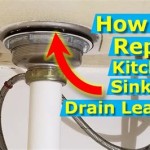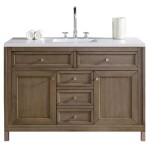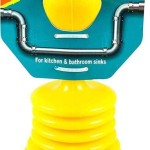Plastic Pipe Under Sink Leaking: Diagnosis, Repair, and Prevention
A leaking plastic pipe under a sink represents a common household plumbing issue that, if left unattended, can lead to water damage, mold growth, and increased water bills. Identifying the source of the leak, understanding the different types of plastic pipes used, and employing proper repair techniques are crucial steps in addressing this problem effectively. This article provides a comprehensive overview of diagnosing leaks, the various causes, and the methods for repairing and preventing leaks in plastic pipes under sinks.
The plumbing system beneath a sink typically comprises several plastic components designed to drain water from the sink to the main drain line. This assembly often includes a P-trap, tailpiece, drain pipes, and various connection points secured with slip nuts. These components are commonly made of ABS (Acrylonitrile Butadiene Styrene) or PVC (Polyvinyl Chloride) plastic, both chosen for their durability, cost-effectiveness, and ease of installation. However, even these materials can be susceptible to leaks over time due to wear and tear, improper installation, or physical damage.
Identifying the Source of the Leak
The first step in addressing a leaking plastic pipe under a sink is to accurately pinpoint the source of the leak. This requires a systematic approach to avoid unnecessary disassembly and potential aggravation of the problem. Begin by thoroughly drying the area under the sink with a clean cloth or paper towels. This will help in observing where the water is actively emerging from.
Carefully inspect each connection point, including the slip nuts that secure the pipes together. These are common areas for leaks, often resulting from loose nuts or degraded rubber washers. Run your fingers along the pipes themselves, feeling for any dampness or dripping. Pay close attention to the P-trap, as it is designed to hold water and can be a source of leaks if cracked or improperly sealed.
If the leak is not immediately apparent, try running water in the sink for a few minutes while observing the pipes underneath. This will help to pressurize the system and make smaller leaks more visible. A flashlight can also be helpful in illuminating hard-to-see areas and identifying the exact origin of the leak. In some cases, the leak may only occur when the garbage disposal is used, indicating a potential issue with the disposal unit's connection to the drainpipe.
Common Causes of Leaks in Plastic Sink Pipes
Several factors can contribute to leaks in plastic pipes under a sink. Understanding these common causes can aid in proper diagnosis and selection of the appropriate repair method.
Loose Slip Nuts: Slip nuts are used to create watertight seals at the joints between different pipe sections. Over time, these nuts can loosen due to vibrations, temperature fluctuations, or physical disturbances. A loose slip nut allows water to escape, resulting in a noticeable leak. This is often the easiest type of leak to fix, typically requiring only the tightening of the nut.
Degraded Washers: Rubber or plastic washers are used inside slip nut connections to create a watertight seal. These washers can degrade over time due to exposure to water, chemicals, or temperature changes. A degraded washer loses its elasticity and becomes less effective at sealing the joint, leading to leaks. Replacement of the washer is usually necessary to resolve this issue.
Cracked Pipes: Physical damage or age can cause cracks to form in the plastic pipes. This is especially common in pipes that are exposed to frequent impacts or extreme temperature changes. Cracks can range in size from hairline fractures to larger splits, and they can leak intermittently or constantly depending on the severity of the damage. Repairing a cracked pipe often requires patching or replacement of the affected section.
Clogged Drains: A clogged drain can cause water to back up in the pipes, putting excessive pressure on the joints and connections. This pressure can weaken the seals and lead to leaks. Furthermore, the buildup of debris within the pipes can accelerate corrosion and degradation of the plastic material. Clearing the clog and addressing any underlying pipe damage is necessary to resolve this issue.
Improper Installation: Incorrect installation of the plastic pipes can also lead to leaks. This includes issues such as misaligned pipes, overtightened or undertightened slip nuts, and the use of incompatible materials. A poorly installed system is more likely to develop leaks over time, requiring correction of the initial installation errors.
Repairing Leaking Plastic Pipes
The repair method for a leaking plastic pipe under a sink depends on the cause and severity of the leak. Simple fixes, such as tightening a slip nut, can often be performed by homeowners. However, more complex repairs, such as replacing a cracked pipe, may require the assistance of a qualified plumber.
Tightening Slip Nuts: If the leak is originating from a loose slip nut, the first step is to carefully tighten the nut. Use a pipe wrench or channel-lock pliers to gently tighten the nut in a clockwise direction. Avoid overtightening, as this can damage the nut or the pipe. After tightening, run water in the sink and check for any remaining leaks. If the leak persists, the washer may need to be replaced.
Replacing Washers: To replace a degraded washer, first turn off the water supply to the sink. Place a bucket under the pipes to catch any remaining water. Loosen the slip nuts at the affected joint and carefully disassemble the connection. Remove the old washer and inspect the pipe ends for any damage or debris. Install a new washer of the correct size and type, ensuring that it is properly seated. Reassemble the connection and tighten the slip nuts securely. Turn on the water supply and check for leaks.
Patching Cracked Pipes: For minor cracks in the plastic pipes, a patching compound or epoxy can be used to seal the leak. Clean and dry the area around the crack thoroughly. Apply the patching compound or epoxy according to the manufacturer's instructions. Allow the patch to cure completely before running water in the sink. This method is generally suitable for temporary repairs or for small cracks that are not under significant pressure. For larger cracks or more permanent repairs, pipe replacement is recommended.
Replacing Pipe Sections: If the pipe is severely cracked or damaged, the best solution is to replace the affected section. Turn off the water supply to the sink. Disconnect the pipe at the slip nut connections on either side of the damaged section. Measure the length of the section to be replaced and purchase a new pipe of the same size and material. Cut the new pipe to the correct length using a pipe cutter. Install the new pipe, ensuring that the slip nut connections are properly aligned and tightened. Turn on the water supply and check for leaks.
Addressing Clogged Drains: A clogged drain can contribute to leaks and should be addressed promptly. Use a plunger to try to dislodge the clog. If plunging is ineffective, use a drain snake to break up and remove the clog. In some cases, chemical drain cleaners may be used, but these should be used with caution as they can damage plastic pipes. After clearing the clog, inspect the pipes for any damage and repair any leaks as needed.
Preventing Future Leaks
Preventing leaks in plastic pipes under a sink involves regular maintenance and careful usage practices. Implementing these preventative measures can significantly reduce the likelihood of future plumbing problems.
Regular Inspections: Periodically inspect the pipes under the sink for any signs of leaks, such as dampness or dripping water. Check the slip nuts to ensure they are tight and the pipes are securely connected. Early detection of minor leaks can prevent them from escalating into larger, more costly problems.
Proper Usage: Avoid pouring harsh chemicals or excessive amounts of grease down the drain, as these can corrode the pipes and contribute to clogs. Use a strainer to catch hair and other debris to prevent them from entering the drainpipe. Flush the drain with hot water periodically to help keep it clear of buildup.
Protecting Pipes: Protect the pipes from physical damage by avoiding storing heavy objects under the sink that could fall and impact the pipes. If the pipes are exposed to extreme temperature changes, consider insulating them to prevent cracking or expansion and contraction. This is especially important in areas with cold winters where freezing temperatures can cause pipes to burst.
Professional Maintenance: Consider scheduling regular plumbing maintenance with a qualified professional. A plumber can inspect the pipes, identify potential problems, and perform preventative maintenance to ensure the system is functioning properly. This can include tightening connections, replacing worn washers, and clearing any minor clogs before they become major issues.

How To Fix Kitchen Sink P Trap Leaking Pipe Connection Nut Youtube

4 Simple Ways To Fix A Leaky Sink Drain Pipe Wikihow

Easy Ways To Fix A Leaky Sink Trap 12 Steps With Pictures

Leak How To Fix Leaking Bathroom Sink Drain Where Pvc Meets Abs Connection Home Improvement Stack Exchange

How To Fix Or Replace A Leaky Sink Trap Hometips

4 Simple Ways To Fix A Leaky Sink Drain Pipe Wikihow

Plumbing Drain Trap Leaking At Compression Joint Home Improvement Stack Exchange

Quick Tip For A Kitchen Sink Drain That Is Leaking

How To Fix Leak On P Trap

Bathroom Sink Pvc Plastic Drain Pipe Leak Repair Sylmasta Net







